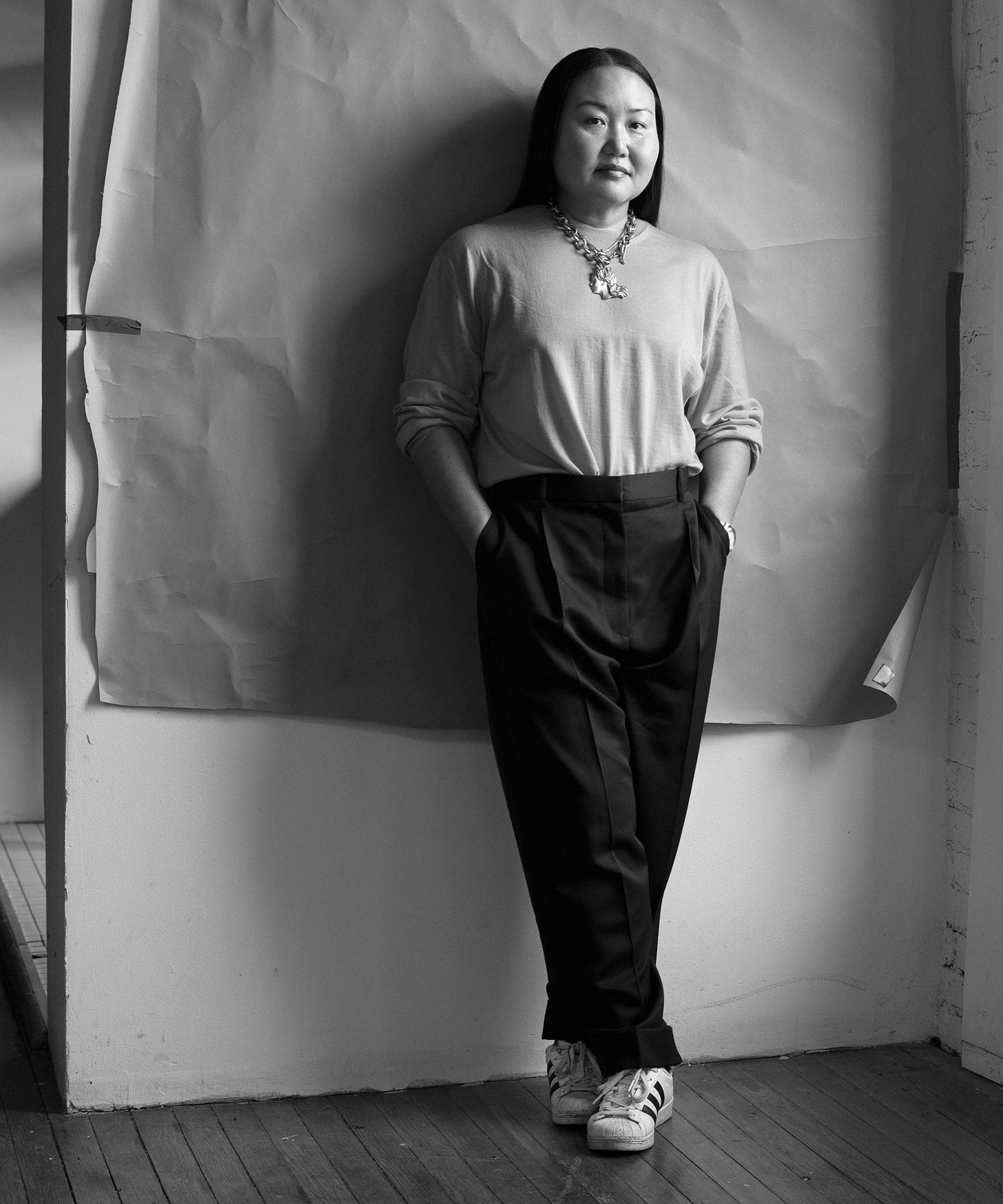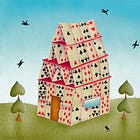✍️ "Making It" — On Artists, Beginners, and Do-Overs
Reprint of Hanya Yanagihara's Letter from the Editor for T Magazine's Culture Issue
I look forward to greeting the thick weekend edition of the New York Times on my stoop every Saturday and Sunday morning. When it’s extra heavy, I know there’s an ad-laden T Magazine sitting inside.
Flipping through the first third involves eye-rolling while skipping past a never-ending parade of fashion ads until finally the table of contents surfaces, meaning my favorite part of every issue is near. Sometimes it’s the only part I read before recycling the rest: the half-page letter from the magazine’s editor, Hanya Yanagihara.

I learned about her through a 2022 New Yorker profile. In addition to her role at T, Yanagihara moonlights as a novelist. Just as the best novelists are gifted at describing truths many of us experience but can only grope for in hazy words to explain, with every edition, Yanagihara shares incisive thoughts about leading a creative life.
Read the opening paragraphs of D. T. Max’s profile and see if you aren’t as captivated by her as I am!
Hanya Yanagihara wears her black hair pulled back with a razor-sharp center part, and she prefers to dress in black, especially in clothes by Dries Van Noten, the cerebral Belgian designer. She is the editor-in-chief of T, the style supplement to the Times, which publishes articles and photo-essays about fashion, travel, art, and design. Through her editorial work, Yanagihara, who is forty-seven, has become conversant with hundreds of creative people and their work.
She has spent a lot of time travelling and has an unusually international aesthetic: she is as comfortable speaking about ceramicists in Sendai as about conceptual artists in New York. She took over T four years ago, and, thanks to her magpie intelligence, it has become a vibrant cabinet of curiosities. Fashion and design spreads are now steeped in art history, and the magazine publishes essays that are surprising, and sometimes esoteric: an analysis of avant-garde flower arrangers; a rigorous survey of artists, from Japan to South Africa, who are “reimagining the animal figurine.”
Yanagihara’s private life is as constrained as her cultural knowledge is broad. She lives in a narrow SoHo loft, decorated with art and antiques and baubles, that she calls her “pod.” She rarely goes out and likes her place to be tidy—she won’t host dinner parties because she doesn’t “want the crumbs.”
Once a year, T produces an issue dedicated to artists, creativity, and culture.
In 2022, they followed 24 Hours in the Creative Life. My favorite part of that edition is Letters to an Artist: “The creative life is one defined by insecurity, doubt and uncertainty (as well as overconfidence, arrogance and delusion). We asked 40 poets, painters, photographers, filmmakers, actors, musicians and writers to share hard-earned wisdom for every stage of an artistic career.”
In 2023, they profiled women in the arts.
This year, the Culture Issue explores beginnings: “From debuts to do-overs, what it means to start an artistic life — at any age.” I loved Hanya’s Letter from the Editor so much as it relates to our Dohventures that I hope it’s okay to share it with you here in full (asking for forgiveness, not permission!).
“There’s a reason all of us — magazine editors in particular, perhaps, but not only us — love an artistic debut.
It’s not just that those releasing their first album, book or movie, or having their first gallery exhibit or Broadway show, are usually young; it’s that they embody that most delicious and evanescent of qualities: promise. Any painter could be the next Rothko or Basquiat; any singer could be the next Joni or Aretha. There the new artist sits, poised between our expectations and their unwritten reality. Becoming emotionally invested in an untested creative life is like becoming financially invested in an exciting new company — should they (or it) work, the reward is not just theirs but ours. “See?” we tell ourselves. “We knew it all along.”
But the real test of being an artist isn’t the first album, book, movie or Broadway show, as significant as those accomplishments are. It’s what happens after. All artists know that living a true creative life means facing an endless series of beginnings: It’s starting over after setbacks; it’s pushing forward through doubt and despair; it’s trying again when someone tells you no; it’s slogging ahead when no one seems to like or care about what you make; it’s ignoring the voice inside you that tells you to stop; it’s striving and failing, again and again and again. There is no point of complete security, no award or recognition that bestows total confidence — a life in art means that, to some degree, you’re starting anew every day.
As the novelist Andrew Holleran tells T, “Writing is basically unconscious, and you don’t get any smarter about it. Imagine a brain surgeon who didn’t learn from each operation? We’d be horrified. But when you sit down to write, you’re always wondering how to do it.”
In this issue, we look at what it means for an artist to begin, from actual debuts (such as Sky Lakota-Lynch, one of our cover stars, who’s appearing this spring in “The Outsiders,” his first original Broadway role) to do-overs (such as Jon Bon Jovi, about to embark on tour after throat surgery and a 40-year career, or the cabaret performer turned visual artist Justin Vivian Bond).
And though the artists who appear in these pages are all different, they share a spirit of generosity: It’s no easy thing to give voice to your dreams and insecurities, much less to do so publicly. Their collective perseverance — a mix of dogged determination and wild hope — is a reminder for all of us that a creative life, that all life, takes nerve. It takes humility. It takes a kind of arrogance that sees you through the most barren periods.
And by the way: You don’t need to be young to lead a creative life. All you have to do is start. Start — and then never stop.
—Hanya Yanagihara, T Magazine’s Letter from the Editor, “Making It”1
❤️









